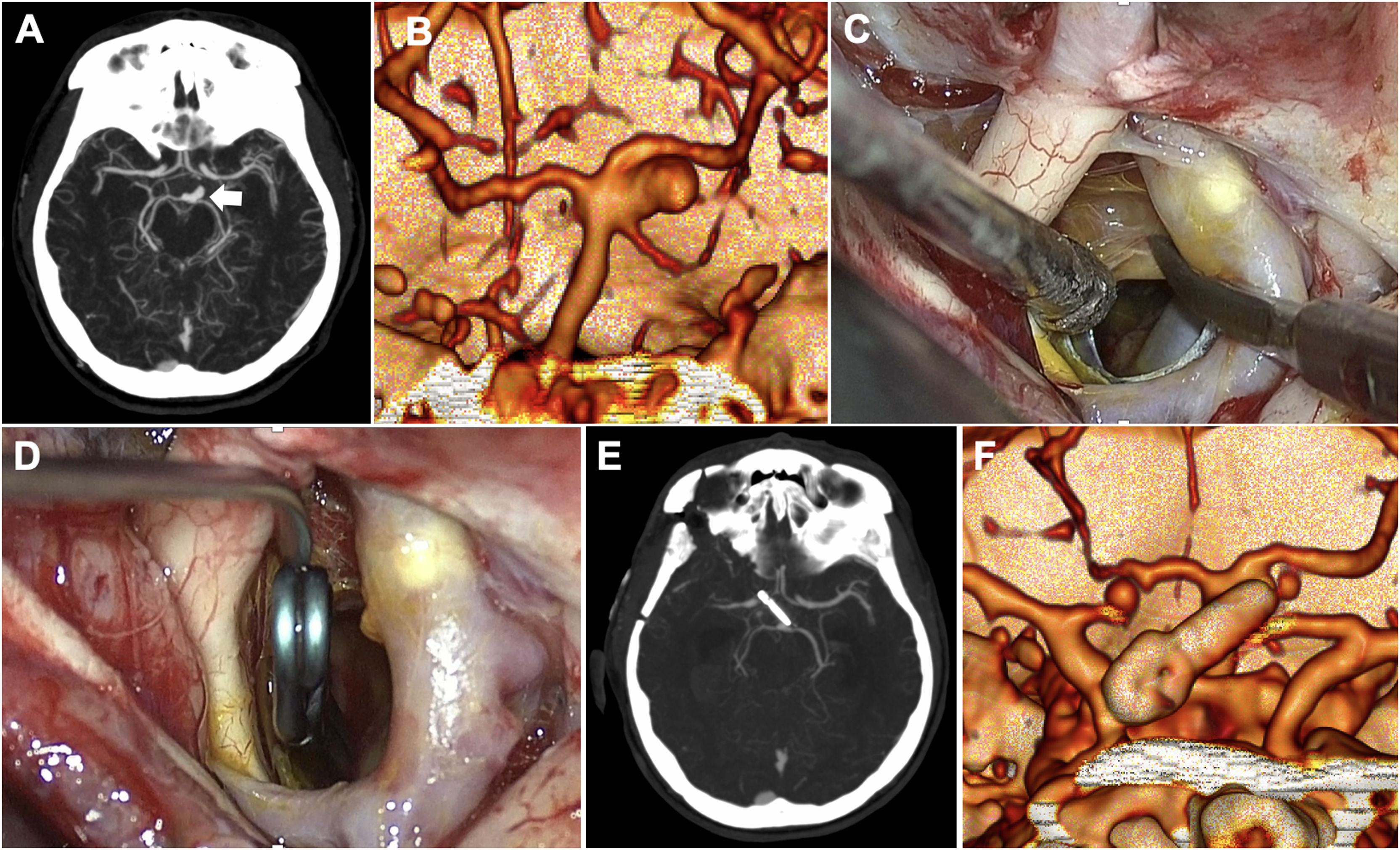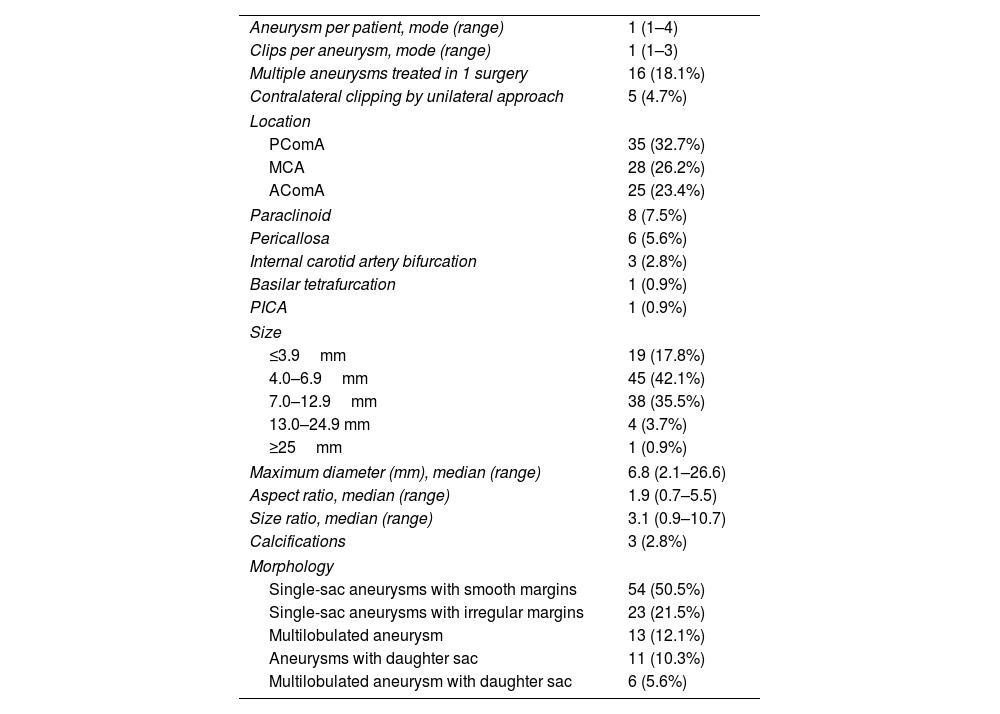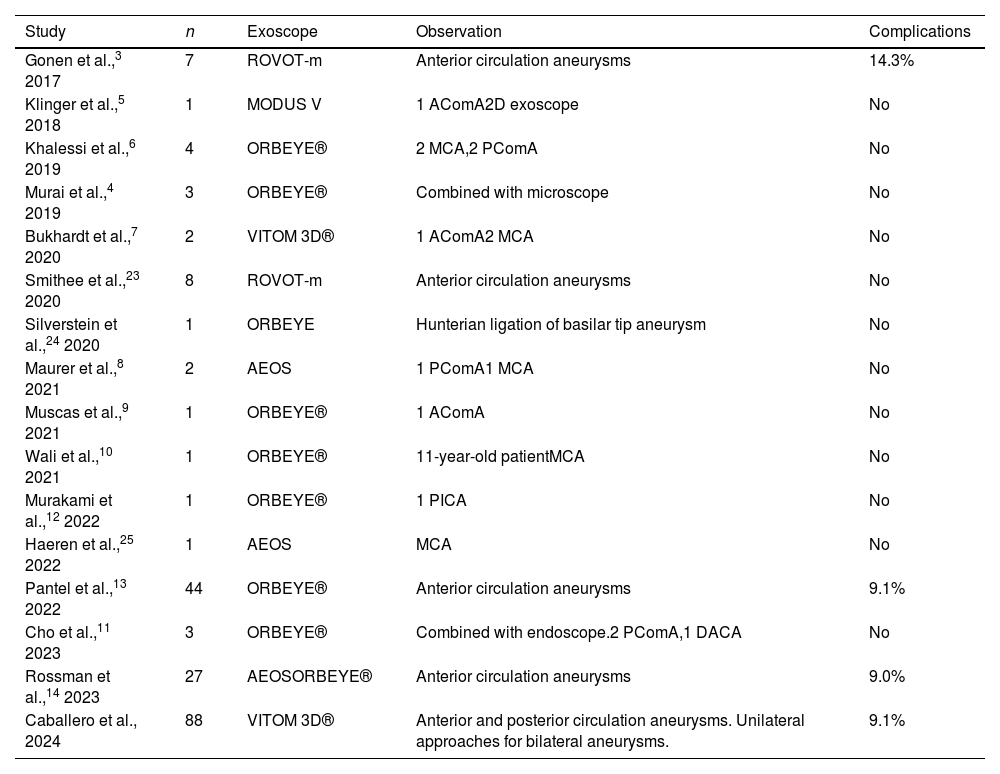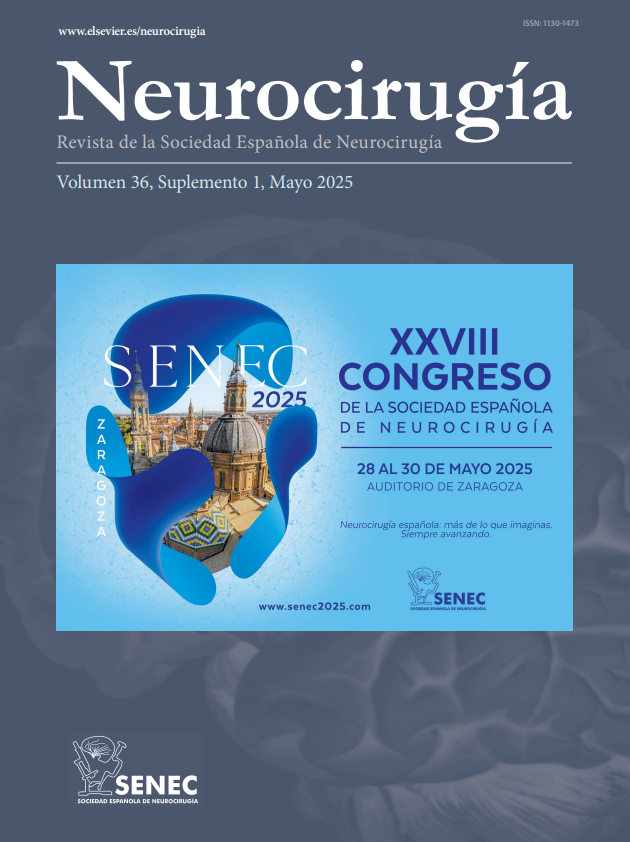The use of a digital three-dimensional (3D) exoscope system in neurosurgery is increasing as an alternative to the operative microscope due to its similar visual fidelity but superior ergonomics. However, publications on cerebral aneurysms treated with this are scarce.
MethodsClinical information, surgical records and, imaging of patients with cerebral aneurysms undergoing surgery by a single surgeon, from December 2023 to March 2025, using the VITOM 3D as a vision/magnification method exclusively, is analyzed. Postoperative follow-up included angio-CT scan. Descriptive statistics and data relating to operative time and complications were analyzed. An extensive discussion regarding other authors’ experience using 4K 3D exoscopes in microsurgical clipping of cerebral aneurysms was performed and compared with the present series.
ResultsEighty-eight patients with 107 cerebral aneurysms underwent surgery. Most patients were female (65.9%), with a mean age of 52.6 (±13.6) years. Grades I–III WFNS score was seen in 74 (84.1%) patients, with 14 (15.9%) having grade IV. Ruptured aneurysm rate was 94.3%, but up to 14.9% associated unruptured aneurysms were recorded. Complications rate was 9.1%. A favorable outcome was observed in 83.0% of patients based on modified Rankin Scale score at 30 days.
ConclusionVITOM 3D exoscope is a valid alternative to the surgical microscope, since it offers comparable visualization but superior ergonomics, at a lower cost. Randomized comparative studies with a larger series of cases should be carried out to increase the level of evidence.
El empleo de exoscopios 3D en neurocirugía se ha popularizado como una alternativa al microscopio quirúrgico debido a su similar fidelidad, pero superior ergonomía. Sin embargo, las publicaciones de aneurismas cerebrales operados mediante este método de visualización son escasas.
MétodosSe analizaron las variables clínicas, transoperatorias e imágenes de pacientes con aneurismas cerebrales operados por un mismo cirujano, desde diciembre de 2023 a marzo de 2025, empleando el VITOM® 3D como único método de visualización. La evaluación postoperatoria incluyo la angiotomografía cerebral. Se empleó estadística descriptiva, y se analizaron el tiempo quirúrgico y las complicaciones. Se realizó una discusión extensa de la literatura sobre las experiencias de otros autores empleando exoscopios 4K en el tratamiento microquirúrgico de aneurismas cerebrales, y se compararon los resultados con el estudio.
ResultadosFueron tratados 88 pacientes con 107 aneurismas cerebrales. Predominó el sexo femenino (65,9%), con un promedio de edad de 52,6 (±13,6) años. Setenta y cuatro pacientes correspondieron a los grados I-III de la clasificación de la WFNS (84,1%) con 14 (15,9%) grado IV. La frecuencia de aneurismas rotos fue del 94,3%, y en el 14,9% de los casos se trataron aneurismas no rotos asociados. La tasa de complicaciones fue del 9,1%. Se encontró un pronóstico favorable en el 83,0% de los pacientes según la escala de Rankin modificada a los 30 días.
ConclusionesEl exoscopio VITOM® 3D es una alternativa válida al microscopio quirúrgico, pues ofrece una visualización comparable, pero superior ergonomía, a un menor costo. Se requiere de la realización de estudios comparativos aleatorizados de grandes series de casos para incrementar el nivel de evidencia.
Article

If it is the first time you have accessed you can obtain your credentials by contacting Elsevier Spain in suscripciones@elsevier.com or by calling our Customer Service at902 88 87 40 if you are calling from Spain or at +34 932 418 800 (from 9 to 18h., GMT + 1) if you are calling outside of Spain.
If you already have your login data, please click here .
If you have forgotten your password you can you can recover it by clicking here and selecting the option ¿I have forgotten my password¿.















